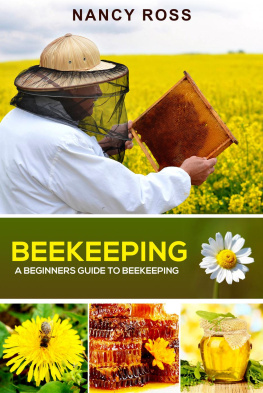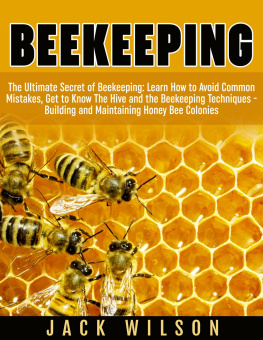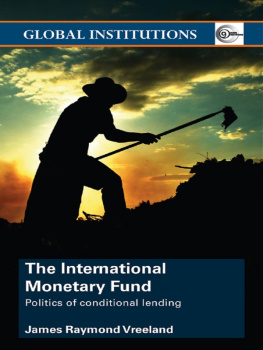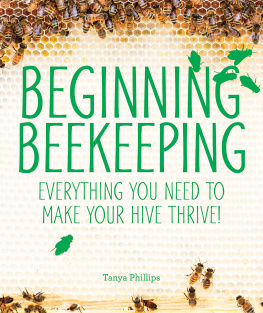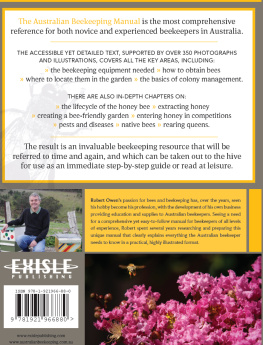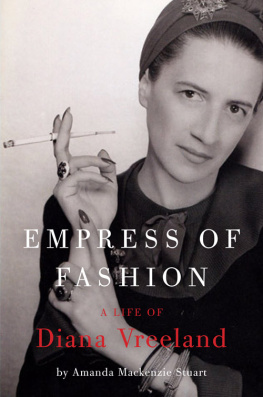Springer International Publishing AG 2017
Russell H. Vreeland and Diana Sammataro (eds.) Beekeeping From Science to Practice
What We Learned as Editors
Russell H. Vreeland 1 and Diana Sammataro 2
(1)
Bickering Bees Farm, 10460 Teackle Rd., Belle Haven, VA 23306, USA
(2)
DianaBrand Honey Bee Research Services LLC, Tucson, AZ, USA
Russell H. Vreeland
Email:
Abstract
In assembling a book like this one, the editors often learn as much, or more, from the exercise than most people believe. Each of the chapters has taught us important lessons some of which include things like the immense value of propolis for bees. So we need to encourage production rather than grumble at the glue. The need for really good record keeping comes through in several chapters as does the value of these records when combined with similar data from other areas. While every modern beekeeper is likely anti-pesticides the wide ranging negative effects on bees come through loud and clear in several chapters. But where most focus is on simply the death of the insects, our contributors show that even harmless pesticides/fungicides are attacking everything from rearing quality queens to the nutritive value of the beebread produced in the hives and how sub-lethal doses alter larval development and survival. Speaking of larva neither of us knew that there are really two forms of American Foulbrood that attack our hives. One kills quickly and is often found, while the second type takes longer and may be unrecognized until it is too late. We learned how far Small Hive Beetle larva will travel to reach soil and how truly devastating these predators really are once they get into a hive. Then there is the material about the well-known Varroa mites, how they have become stronger and how they have become vectors that have increased the strength of specific viruses through a process in which viruses combined in the mite, or the cues used by the mite to infect the larva. On the positive side though we found out about the growing number of Honeybee strains that are fighting back against the mites (some we didnt know about), we also learned about the new developments in honeybee cell cultures that will allow a closer better study of the viruses. Finally, we discovered aspects of venom allergies their frequency and risk factors for all us beekeepers. So there is a lot to learn here in these pages, for us and for you.
Dr. Russell Vreeland
is a chauvinist about two things: microorganisms and pollinators of all types. As a microbiologist, he knows that it is really microbes that run the Earth while the rest of us often just mess it up. He initially trained as a marine microbiologist in the early 1970s and ended up studying the remains of the ancient oceans (large underground salt deposits) as a geological microbiologist. During this part of life, he focused entirely on the marvelous microbes that survive and thrive in saline waters anywhere from 2 to 10 the concentration of seawater.
Dr. Vreelands first experience with hardworking pollinators came in the late 1990s when he obtained his first 12 tubes of solitary pollinator bees. Within 3 years, he was supplying these little darlings to neighbors, friends, and farmers near his home in Pennsylvania as well as to his small wildlife refuge on the Eastern Shore of Virginia. At one point, he and his wife estimate they maintained well over 150,000 solitary pollinators. The solitary pollinators eventually gave way to a sweet tooth, and he started keeping honeybees in 2004. Dr. Vreeland met Diana Sammataro at breakfast when she applied for a professorship at West Chester University, a friendship that has now lasted for almost 18 years. In 2007, Drs. Vreeland and Sammataro began a joint collaborative study to examine the microbial population and changes in bee breads in healthy hives. After both retired from active basic research, they decided to collaborate on this book.
Dr. Vreeland and his wife Susan currently own Bickering Bees Farm located in Craddockville, VA. He is active in the local Beekeepers Guild of the Eastern Shore, frequently gives talks about all types of bees (honey and solitary pollinators) to numerous local civic organizations and schools, and maintains enough hives to sell honey and make mead. Russell has also continued to pursue his other professional love in the form of a small business called Eastern Shore Microbes using his amazing salt-loving Microbes to treat and eliminate highly saline wastewaters from industries all over the world. When he has spare time, he and his dog Beesley go fishing or work with the local US Coast Guard Auxiliary.
There are several reasons behind a decision to assemble a book like this one. We recognized that as scientists, we spend a lot of time conducting experiments and developing important data that helps our understanding of much of Earths natural phenomena and the biota that makes it so interesting. The first problem, however, is that scientists are specialists and tend to focus on specific topics. Second, in order to communicate effectively with each other, scientists often use technical language and terminology. Third, scientific knowledge is generally published in a wide variety of specialized technical journals that have a very limited distribution or availability. So if beekeepers want to get the most up-to-date honeybee science, they must hunt down the journals that have the specialized papers and become conversant in highly technical language, then find out which scientists are doing what type of research. On the other hand, the scientists can spend some time assembling their information into a straightforward discussion directed at the beekeepers who need the information. Truthfully, there is a fourth reason; as scientists and beekeepers ourselves, we realized that the previous three reasons pertained as much to us as they did to the non-scientist beekeepers. We wanted to know what our many colleagues understood, what we in our own specialties did not have time to follow and we wanted to see if we could use all of this valuable information in our own hives. Hence, this book was assembled to provide a source of reference that any beekeeper may use to find the best management practices for any beekeeping operation.
One of the most important lessons that can be gained from examining each (and all) of these chapters is a recognition of the difficulty scientists face in trying to understand these complex and beautiful creatures. Time and again throughout this text, the readers will see that strong and clear results obtained in one set of studies are not quite so strong and clear when the experiments (or observations) are repeated in a subsequent season. This is not necessarily due to poor science as some might quickly assume. Rather, every attempt, no matter how carefully constructed, is complicated by the presence of a different group of bees, different equipment, weather, or other circumstances. Biology is hard to control.
As we assembled this book, we read and edited each of these chapters and we learned a tremendous amount that we intend to use in our respective operations. As a way to help direct you the reader, we decided to discuss what we found to be the most important, most interesting (or in some cases most technical) material coming out of each of these chapters. We have also attempted to provide an overall synthesis with advice on what we see as the best ways to apply this information in beekeeping operations of nearly any size.
We wanted to identify what we see as the important information from each chapter and to stress that what we present here is not all of the information provided in each chapter. This chapter represents a basic summary of the things we enjoyed and what we learned the most in each of the chapters.



